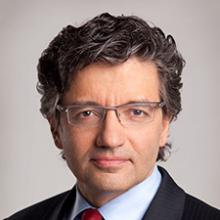A new presence is representing a time-tested physician practice model at the June 2021 AMA Special Meeting, which ends today and is being held virtually because of the COVID-19 pandemic.
The new AMA Private Practice Physicians Section (AMA-PPPS) makes its debut at the AMA meeting—providing a forum for doctors in smaller, independent practices to network, exchange ideas and develop policy proposals that reflect their unique interests and needs.
The new section “is sort of the national private practice doctors’ lounge in the AMA,” said internist M. Zuhdi Jasser, MD, president of the Jasser Center for Comprehensive Care in Phoenix and chair of the AMA-PPPS. “While our community may have shifted out of the doctors’ lounge and into Zoom meetings, the private practice section is now a key facilitator in bringing folks together.”
Membership in AMA-PPPS is open to any AMA member in a physician-owned private practice, which is defined as a practice with 50 or fewer physicians and in which those doctors own a controlling interest. Applications for membership are considered on a rolling basis.
There are three clinicians in Dr. Jasser’s practice, and he noted that many section members belong to practices of a similar size. These independent-practice physicians can find kindred spirits in the AMA and membership in state and specialty medical societies.
“I've always been a member of the AMA and my state medical society—that is my community,” Dr. Jasser said. “But, within that organized-medicine community, we needed a network of small-practice physicians to lean on one another to learn about the business of medicine that we would not have the resources for.”
Finding their medical homes
Dr. Jasser is not just a member of the Arizona Medical Association, he is a former president. Similarly, the section’s chair-elect, Muskego, Wisconsin, family doctor Barbara Hummel, MD, is a former president of the Wisconsin Medical Society. Both serve in the AMA House of Delegates as representatives from their state medical associations.
“While every practice type needs representation at the AMA, we are probably the most in dire need of that,” Dr. Jasser said. “We're starving for communication outside our practice to learn about what are the newest and best practices, the best ways to make sure we're optimizing patient care and the economic interest of the practice without reinventing the wheel.”
The section had a virtual launch in April and has met regularly with AMA Board of Trustees’ liaisons and the leadership of the other sections.
“We're quickly—thanks to the AMA staff—becoming very well integrated into the AMA ecosystem,” Dr. Jasser said. Among the section’s early areas of focus in terms of policy are prior authorization, administrative simplification and patient privacy.
Autonomy, creativity bring rewards
Less than half of patient-care doctors—49.1%—work in physician-owned practices, according to 2020 Physician Practice Benchmark Survey conducted last fall. This is down from 54% in the 2018 AMA survey, and Dr. Jasser believes this is evidence that more needs to be done to expose medical students and residents to the private practice experience.
“It saddens us that many of them don't realize that this is still an option and that it may not be as high-risk as they think,” he said. “If you believe in diversity of American medicine, then there's no doubt that we should continue to do what we can to make sure that this option is present.”
Residents do rotations in his practice and they accompany him when he visits patients in the hospital.
“The community clinic setting opens their eyes to things like the limitations of formularies and other things that they might not see in the hospital,” Dr. Jasser said.
While private practice doctors face a different set of challenges than those encountered by employed physicians, some research suggests that those in practices of fewer than five clinicians experience less burnout than physicians in other settings.
Dr. Jasser credits this to the ability to make rapid adjustments to practice design without having to endure an endless bureaucratic-approval process and to the autonomy that comes with “writing your own paycheck.”
That sense of independence “keeps you at peace and adds to your ability to be creative in the care of your patients,” he said. “While there can be financial struggles, small-business medicine allows you to practice in the specialty of your choice, to be an entrepreneur, to develop your own practice character completely unencumbered by a greater institution—because you’re developing your own institution, your own website, your own shingle, if you will.”




